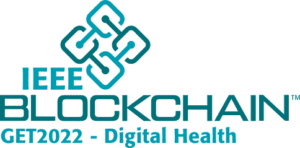
Scope and Motivation
The COVID-19 Pandemic has both laid bare challenges in our existing health technology infrastructure as well as the opportunities available in virtual care, mobile technology, remote patient monitoring and patient-centric processes.
As the world’s foremost Standards Development Organization (SDO), IEEE is uniquely positioned to participate in the forward thinking and new technology that contributes to driving new standards, and leverage that to present the direction of “healthcare after next”.
Virtual Care and Mobile Technologies
Over the last five years, the use of telehealth, virtual care and supporting mobile apps and devices have exploded, especially during the pandemic. However, these new technologies and modalities have still not achieved their tipping point for adoption. Our symposium will dive in with experts into the future of adoption and use of mHealth and virtual care.
Remote Patient Monitoring (RPM) and Wearables
The continued growth of networking, wireless, Internet of Things (IoT), and computing power has been rapidly evolving the use of wearable devices and RPM to help patients gather their own health data and provide remote feedback to providers. The symposium will provide an overview of RPM and wearables technology, IoT, and where the industry is going.
Blockchain in Healthcare
As discussed in previous posts, blockchain is a decentralized digital ledger of transactions that records data in a way that prevents hacking and altering of data by duplicating transactions and dispersing them to “nodes” across the network.
As the blockchain brings major solutions to healthcare, the industry will need to learn to adjust to a new, patient-centric network. Other industries will find themselves in a similar position. Has your organization prepared to adopt blockchain technology?
Emerging technologies (like Blockchain and others) will not only revolutionize medical records, it will also create a patient-centric healthcare industry dramatically different from what exists today. For example, as discussed in previous posts, blockchain is a decentralized digital ledger of transactions that records data in a way that prevents hacking and altering of data by duplicating transactions and dispersing them to “nodes” across the network.
“Blockchain possess the potential to revolutionize the healthcare industry by placing the patient at the center of the ecosystem, amplifying interoperability, privacy, and security of health data,” write Vic Gupta and Harish Nanda, the Executive Vice President of Digital & AI and Chief Architect of Coforge, in ET Healthworld.com. “The technology is set to equip [the] healthcare industry with a more advanced Health Information Exchange (HIE) model that could genuinely transform electronic medical records, making them significantly more secure, efficient, and disintermediated.”
However, the healthcare industry has been slow to adopt blockchain due to the sensitivity of the data handled.
Healthcare Blockchain Relies on Hybrid Technology Stacks
Because the healthcare industry needs to protect highly sensitive patient data, its blockchain technology must rely on a hybrid technology stack, rather than a system in which data is delivered across blockchain nodes, according to Stuart Hanson, CEO of Avaneer Health.
“Instead, this technology can be used to help index the complex industry sources of data across a network and make this data more fluid and, therefore, valuable,” he told Healthcare IT News. “In other words, we need to figure out a delicate balance between blockchain and other technology components within the stack in order to preserve the key value added from blockchain while making the entire system robust and optimized for the healthcare use cases.”
How Multiple-Signature Contracts Will Provide Solutions to the Healthcare Blockchain
According to Xudong Huang, a researcher at Harvard Medical School who was interviewed by Managed Healthcare Executive, healthcare blockchain is valuable to patients because it simultaneously provides them with data security and data ownership, compared to traditional data management and security systems, which he discussed in a 2019 paper.Blockchain-based systems would require patients to authorize retrieval of their data through what Huang and coauthors call multiple-signature, or “multisig,” contracts in healthcare blockchains. Using these signatures, both the patient and healthcare provider use separate private keys to access the patient’s medical record in the network. While this means the provider can’t access the patient’s data without permission, it also means that only providers—not patients—can change the patient’s data.
While siloing data in such a way can create obstacles for big data analytics, which researchers and healthcare companies often rely on to create solutions in the healthcare industry, Huang thinks it may actually help.
“An easy solution for this is any de-identified patients’ data can be released to a public database for easy access,” he told the publication. In other words, blockchain would allow wider, simplified access of data among vetted parties on the blockchain.
As the blockchain brings major solutions to healthcare, the industry will need to learn to adjust to a new, patient-centric network. Other industries will find themselves in a similar position. Has your organization prepared to adopt blockchain technology?
Important Dates
- Paper Submission: 23/September/2022
- Author Notification: 27/September/2022
How to Submit a Paper
All papers for technical symposia should be submitted via EDAS. Full instructions on how to submit papers are provided on the IEEE GET Blockchain 2022 website


